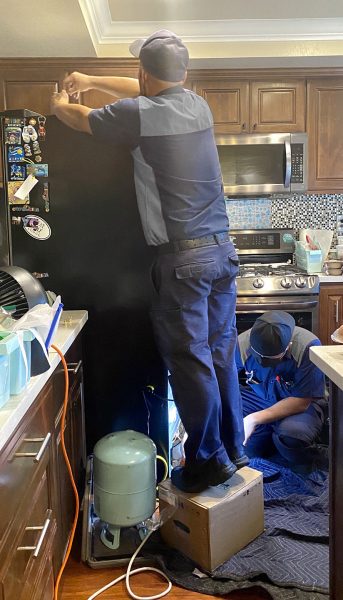Home appliance repairs can be more expensive than replacing an appliance, depending on the type of failure.
A Pasadena resident, Chang, called a local repair shop because frozen food in the freezer was melting. When she described the symptoms, they told her the compressor was probably broken, but they needed to look. When she asked how much it would cost, she was told it was out of warranty, so she was charged $120 for a consultation, $500 for the compressor, and $500 for labor, for a total of $1,120. The repairman advised that she could buy a new one for a few hundred dollars more, so she rather bought a new one.
CNBC senior field producer Stephanie Dhue also reported on the home appliance repair price gouging in her case.

When the light inside her GE microwave, which she bought four years ago for $355, didn’t work, she called a GE-authorized repair shop for an estimate because she couldn’t replace it herself. She learned that the repair could cost as much as $400 in addition to the cost of the lamp because it would require disassembly. Once the technician arrived, she would be charged $125, which could cost $512 to replace the lamp, so she ended up buying a new one for $175.
Dhue asked GE why the microwave was designed this way, and a GE spokesperson responded via email, “These are not ordinary light bulbs and failures are very rare. Due to the high voltage nature of the microwave oven, it is unsafe for the customers to reach into the interior.”
A Tustin resident, Lee, said, “My dishwasher stopped working and I called a technician. He looked at it and said the drain hose and pump were broken and needed to be replaced. When I asked how much it would cost, he said $400 for materials and labor, plus a $100 diagnostic fee. He said that he could replace it with a new one for $400-600 and waived the diagnostic fee, so I bought a new one.”
Consumer advocacy groups like US PIRG are calling for easier and cheaper access to repairs for consumers.
“Right now, there’s no way to know if a product is designed to be repaired or how durable it is,” said Nathan Proctor, senior campaign director of US PIRG’s Right to Repair campaign.
Twelve states, including California, Maine, Massachusetts, Minnesota, and New York, have right-to-repair laws that require manufacturers of household appliances to provide repair information, such as parts, software tools, and schematics, at a fair and reasonable price.
However, some states’ right-to-repair laws are limited to specific products, such as New York’s, which does not include appliances.
Peter Mooey, founder of online repair information-sharing site fixitclinic.blogspot.com, said it depends on the cause of the malfunction and safety concerns, but it’s worth trying to fix it yourself.
“Searching online for the problem with a broken product can give you an idea of how other consumers have solved the same problem,” he added.
For example, ifixit.com, a repair information and parts seller website, offers more than 110,000 manuals and how-to videos and images for appliances, cars, cell phones, electronics, computers, and apparel.
BY NAKI PARK, HOONSIK WOO [park.naki@koreadaily.com]




